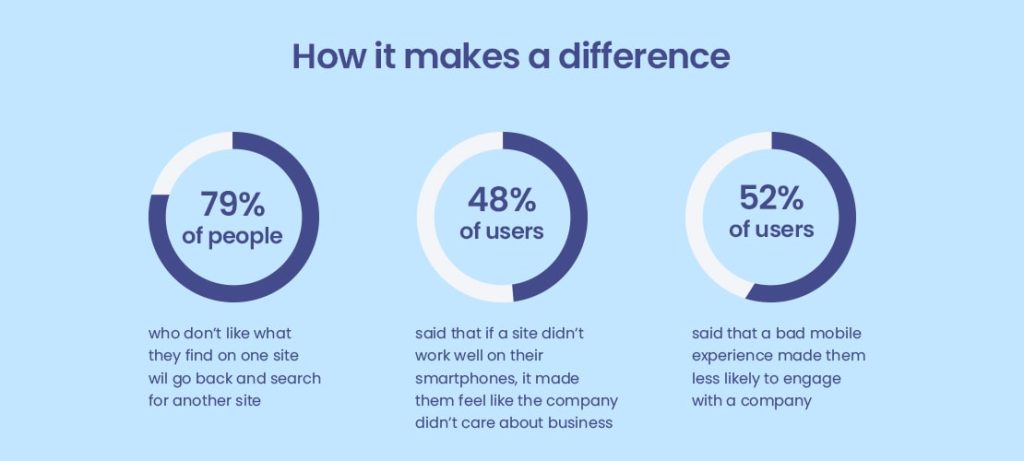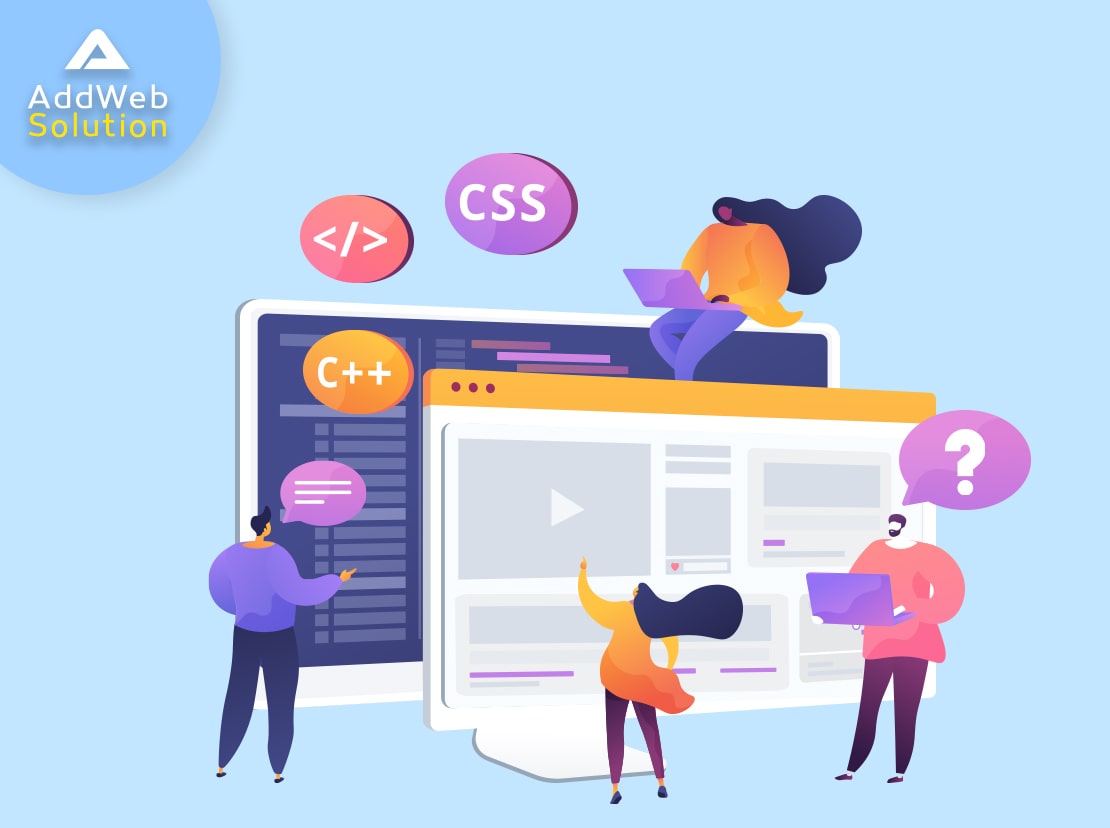Just imagine:
- You’ve spent a ton of time redesigning your website.
- You’ve hired the most professional web design company to do it for you.
- You’re sure your visitors are going to love the revamped web design (and of course you!).
But you encountered the same problem again – not getting enough visitors! Even your redesigned website is not found on the top five or ten pages of Google.
Thinking about what went wrong this time??? Let’s figure it out!
A website redesign is not just about changing a theme, icons, and fonts. It is more of a complex project with a lot of moving parts. Everybody has their perception about how a website should look and feel. But most organizations fail to leverage web design services when it comes to redesigning their website. And the reasons could be anything. In this blog post, we will look at a few most common redesign blunders that may turn your web redesign project into a big success.
Fail to analyze existing site design
A thumb rule applicable to everything you do is: “You cannot solve a problem if you are not aware of what’s wrong.”
The same applies to website redesign. Before you hire a web designer to be redesigning, you must analyze your current website. Make a list of things that are working perfectly fine and design elements that are hurting your brand. Try to figure out how much traffic you are getting at present, the bounce rate, and the keywords or phrases ranking in the search results. Without any proper research and analysis of your website, you won’t be able to identify the exact root cause for your website’s poor performance. And end up redesigning the website for no such reason. Therefore, it is always advisable to analyze your existing website before hiring any web design agency and investing your time, effort, and money.
Also Read: How to hire a Remote Team for your next Web Development project?
Begin redesigning of a website without any clear scope of work or final goals.

Most of the time, organizations decide to redesign their website in a hurry without any clear scope of work or final goals. A website redesign is not just about using modern technologies and tools to make the website appealing. It is important to figure out why you invest your time, money, and efforts in redesigning. Without proper scope and goals in place, you might end up changing the entire web redesign strategy at the very last moment. Having a clear scope of work and goals in line will help you give a clear picture of how it will go on air, what will be different phases of work, and how much resources are invested.
Ignoring speed of page loads
It is observed that the web design agency focuses on the design aesthetics, visuals, and content. Of course, this is important for a web redesign, but page load speed is crucial. It is not only part of Google’s algorithm, but the mobile users heavily expect it. If we look at the statistics, it is found that 47% of users expect page loads in hardly 2 seconds or less. If a website fails to load within 2 seconds, 40% of the users abandon the site. Therefore, it is crucial to focus on the speed of page loads. Make sure you follow the best practices to improve the page load speeds, such as removing elements slowing down your site and use tools to optimize the website.
Still choosing a non-mobile-friendly website

Have you ever met someone who told you that he or she is not using a smartphone in recent years? Well, it is not possible for sure! Everybody prefers mobile to perform every possible task. If you check the stats, you will find that mobile devices generate roughly 52% of web traffic. This means you must plan a mobile-friendly version of your website whenever going for a web redesign. If you fail to make your revamped website mobile-friendly, you will lose most of your traffic. So, avoid making this mistake and have a mobile-compatible website.
Also Read: Importance of UX design for enterprise applications
Too many large images and media files still reside on your website!
Everyone loves decorating their website with alluring images and media files. We all love to do it, and nothing wrong with it. But it will heavily affect the performance of your website. If you don’t believe it, try and check your web page’s speed on Google’s PageSpeed Insights test. If you have used large image and media files while redesigning your site, it is time to either optimize them or remove them from your website.
People hate unnecessary pop-ups!
Yes, that’s a harsh reality. Of course, pop-ups can be a great way to improve the conversion rate, but if used correctly. But the problem with most websites is that they use too many pop-ups that annoy the visitors. During web redesign, make sure you ask the web design company to design pop-ups in a way that your audience loves to see.
Scroll, scroll, and scroll!!!
You must have seen websites where you scroll down, and new content keeps loaded every time you scroll. It is a great thing, and you are happy to redesign your website with such a feature. But there is a problem with this. Google bots can not scroll! It means your newly redesigned website will not be indexed. In the end, your website will not be in the top SERP! Therefore, make wise use of scrolling while redesigning your website.
What more do you have to rethink?
There are many other aspects you have to work around to make your website redesign project a huge success. Right from proper redirection links, optimized content, SEO best practices, and realistic budget to selecting the right web design agency, you have to work on every possible thing you can think of.
Frequently Asked Questions
A clear strategy is paramount. It ensures alignment with business goals, defines the target audience, and guides design and functionality decisions. Skipping this step often leads to confusion and ineffective redesigns.
Ignoring UX can result in a frustrating user journey. Common mistakes include complicated navigation, cluttered layouts, and neglecting mobile responsiveness, all of which can drive visitors away.
Maintaining SEO rankings is possible with proper planning. However, blunders like changing URL structures without proper redirects or neglecting keyword optimization can harm search engine rankings.
In today’s mobile-centric world, a lack of mobile responsiveness can alienate many users. It’s crucial to ensure the redesigned website is optimized for various devices to provide a seamless user experience.
Failure to back up data can result in losing valuable content and customer information. It’s essential to have a reliable backup system in place to prevent data loss during the redesign process.
While updating a brand identity is common, a complete overhaul may confuse existing users. It’s important to balance modernization and maintaining brand recognition to avoid alienating loyal customers.
Underestimating performance optimization can lead to slow load times, negatively affecting user experience and SEO. Image compression, proper coding practices, and efficient hosting are critical for a well-performing website.
Skipping thorough testing can lead to functionality issues, broken links, and compatibility problems. Testing the redesigned website across various browsers, devices, and user scenarios is crucial to ensure a smooth launch.
Neglecting post-redesign maintenance can result in security vulnerabilities, outdated content, and a decline in performance. Regular updates, security checks, and content refreshes are essential for the sustained success of a website.

